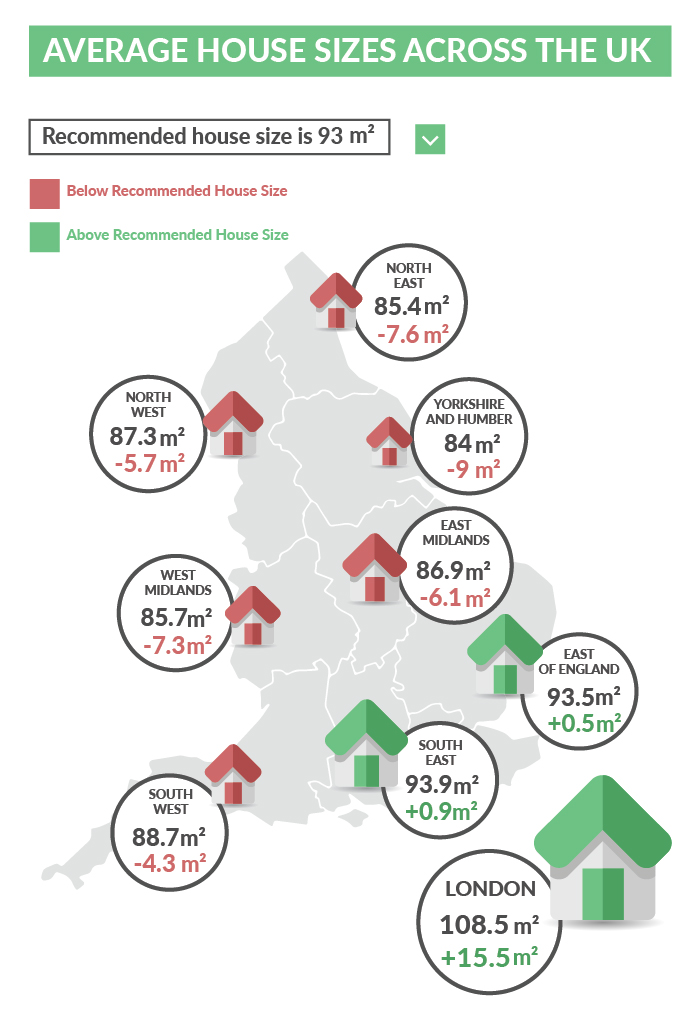An investigation by Sellhousefast.uk has revealed Britain has the smallest homes in Europe, measuring less than the regulatory minimum in some cases
The UK has some of the smallest homes in Europe, according to new research. Analysis from Sellhousefast.uk found the average three-bedroom home measures 88m2. This is 5m2 smaller than the regulatory minimum.
According to the property company, part of the reason behind this shrinkage is linked to changes with planning regulations, which means commercial properties can be converted into residential. This change of use means these properties do not have to abide by the minimum size value and, in some cases, are measuring as little as 13m2—the size of an average bedroom. With 12 per cent of new homes in England last year converted from commercial sites this is an issue that may continue to grow.
‘Shoebox’ houses
Demand for new homes amidst a housing shortage has seen some developers selling substandard properties for inflated prices. Despite guidelines that came into force in 2015 which require flats to measure at least 37m2 there has been an upsurge in the number of ‘shoebox’ homes.
Problems are also being seen with homes, with the average three-bedroom property measuring just 88m2—falling short of the stipulated 93m2.
Sellhousefast.uk found Yorkshire had the smallest homes, measuring at an average of 84m2 for three-bedroom properties.
London had the largest at 108.5m2, although the property firm said the capital is also seeing an upsurge in the shrinking of homes.

UK comes in behind other European nations
These figures are all the more concerning when considering the Netherlands and Germany—both of which have dense populations—average at 115.5m2 and 109.2m2, respectively.
Denmark boasts the largest floor space, with the average property measuring 137m2.
Commenting on the analysis, Sellhousefast.uk’s Robby du Toit said: “We are seeing smaller spaces for individual homeowners and families, living in tighter homes, as consumers are forced to accept what the market offers.
“They are prepared to accept less than they want, because house prices are substantially high. On the other hand, there is a rising culture in spending less time at home, especially for the young where the house is just a house – somewhere to sleep, eat and leave important possessions. For such populations, these homes are ideal.
“However, for families who need substantial space these homes are not viable and the lack of suitable options out there is making people delay buying their own home and having children etc.”




![[Video] Fireco: 80 new fire doors required for residential flats in London](https://www.pbctoday.co.uk/news/wp-content/uploads/2025/04/2024-06-01-Lords-view-one_1200x750_004-218x150.webp)








